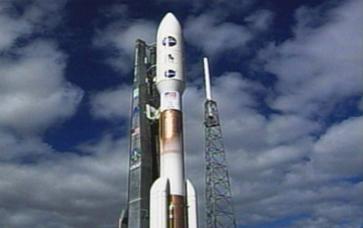NASA canceled the launch of the New Horizons spacecraft on Tuesday, two minutes and 42 seconds before the end of the countdown after the anemometer showed that the wind was blowing at 33 knots - the maximum limit allowed for an Atlas 5 rocket - like the one used to launch New Horizons to pluto

NASA canceled the launch of the New Horizons spacecraft on Tuesday, two minutes and 42 seconds before the end of the countdown after the anemometer showed that the wind was blowing at 33 knots - the maximum limit allowed for an Atlas 5 rocket - like the one used to launch New Horizons to pluto
The flight controllers plan to delay it by 24 hours. Now the scheduled date is today (D) at 20:16 Israel time. Like yesterday, today the launch window is 59 hour and 22 minutes long. Tomorrow's ends at 15:XNUMX Israel time.
21:00
The launch is still delayed, CNN's science commentator is now reporting live that this was done because of the wind that is currently blowing at Cape Canaveral and whose speed is 30-45 km/h. This wind could endanger the spacecraft in the first moments of flight.
The launch is expected tonight at 20:24
If there are no last-minute disruptions, NASA will launch the New Horizons spacecraft this evening (20:24 Israel time), which is supposed to explore Pluto and the Kuiper belt. Due to the enormous distance from the sun, New Horizons will not be able to rely on the sun's energy to supply the electrical needs of the spacecraft's instruments and therefore it carries with it a small nuclear reactor powered by plutonium that will be sufficient for the nine-year flight to the edge of the solar system.
NASA said that it continues preparations despite the protests of protesters against the use of nuclear weapons. About thirty protesters protested near NASA's launch center in Cape Canaveral, claiming that a launch failure could cause plutonium to spread.
New Horizon is scheduled for launch on Tuesday - the journey to Pluto will take nine years
The launch will be carried out using the most powerful rocket in the hands of the US in order to reach and put the small spacecraft, which is the size of a piano, on a relatively fast track to Pluto. If NASA misses this opportunity, the duration of New Horizon's journey will be extended by at least five years.
It will be the fastest spacecraft to date, it will orbit the moon in nine hours and reach Jupiter in just over a year, 100 times faster than a jet plane. However, the goal of this spacecraft is Pluto, the last unexplored planet in the solar system located 5 billion km from Earth. The New Horizons spacecraft, scheduled for launch this Tuesday, will reach it within nine years.
Pluto is a small planet, so much so that there are many who want to deny it this title - it is not similar to the rocky planets - Mercury, Venus, Earth and Mars, nor to the gas giants Chedek, Saturn, Uranus and Neptune. For years after his birth in 1930, he was considered extraordinary.
However, in recent years, astronomers have begun to understand that the type to which Pluto belongs - ice dwarfs - is not unusual. In fact, ice dwarfs are the largest group of bodies in the solar system. Now scientists have an opportunity to learn even more about them and the origin of the solar system.
"Just as a Chihuahua is a dog, the ice dwarfs are still planetary bodies," says Alan Stern of the Southwestern Research Institute in Boulder, Colorado, principal investigator of New Horizons. "The extraordinary becomes the average. Pluto-like objects are much more common in our solar system than the other types of planets we know."
Besides Pluto, the scientists believe that the Kuiper belt contains thousands more comets and icy planetary bodies to the extent that it should become the third region of the solar system. The terrestrial planets and the gas giants are the other two groups. Scientists now believe that they will be able to learn about the evolution of the solar system by studying the Kuiper belt, as it contains remnants from the formation of the solar system. Depending on its functional state when it arrived at Pluto, New Horizons should also detect one or two objects in the Kuiper Belt.
